#Northern Morocco
Text

الحسيمة
#Al Hoceima#Northern Morocco#summer 2023#Mediterranean Sea#in love with this town#probably my favorite beach town#also because it was off season it was nearly empty which was aaamazing#💖
24 notes
·
View notes
Text
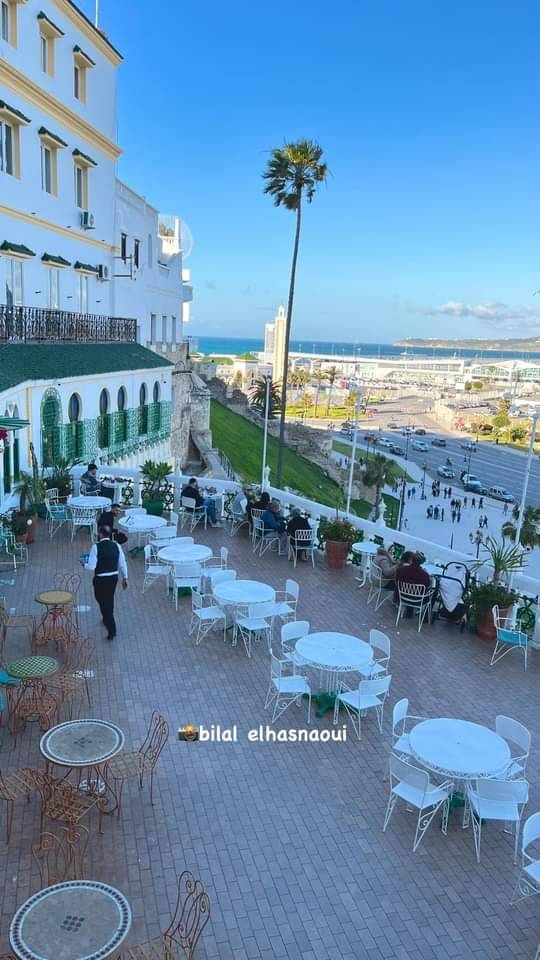
When we least expect it, life sets us a challenge to test our courage and willingness to change; at such a moment, there is no point in pretending that nothing has happened or in saying that we are not yet ready. The challenge will not wait. Life does not look back. A week is more than enough time for us to decide whether or not to accept our destiny.
4 notes
·
View notes
Text

The beauty of this mountain is unparalleled! 🌟🌅
#Akchour#Morning#Park#Morocco#mountains#sunlights#rocks#landscape#mountaineers#mountaineering#tranquility#calm#trees#plants#Akchour Park#Northern Morocco#Landscape Photography#Natural Beauty#Mountain Scenery#Morning Light#Nature's Majesty#Rock Formation#Scenic Vista#Outdoor Adventure#travel#beauty#sky#green#nature#blue sky
2 notes
·
View notes
Text
Ancient bridal costumes from Fes, Rif & Tetouan, Morocco • 19th century, located at Oudaïas Museum, Rabat
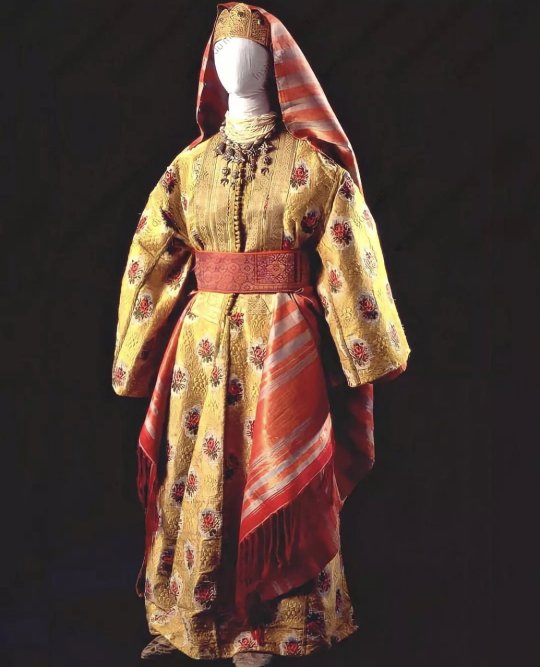


#morocco#moroccan#moroccan fashion#moroccan women#northern morocco#rif#fes#fez#moroccan designers#moroccan costumes#museum#islamic museum#moorish#amazigh#africa#moors#moroccan culture#art history#art museum#museum photography#museum aesthetic#north africa#moroccan style#moroccan clothings#rabat#casablanca#ethnic#agadir#islam#islamic history
14 notes
·
View notes
Text

Fountain in Meknes, northern Morocco
French vintage postcard
#postal#old#photo#photography#meknes#briefkaart#northern#sepia#postkaart#carte postale#postkarte#historic#vintage#fountain#postcard#tarjeta#ephemera#french#morocco#ansichtskarte
8 notes
·
View notes
Text
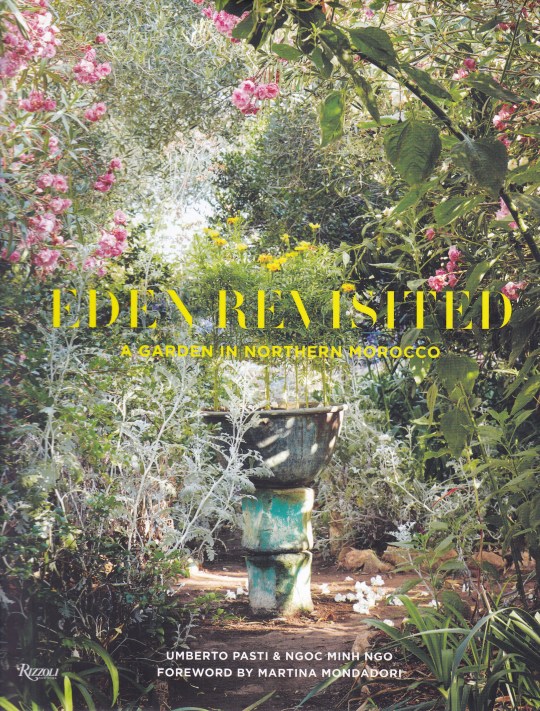
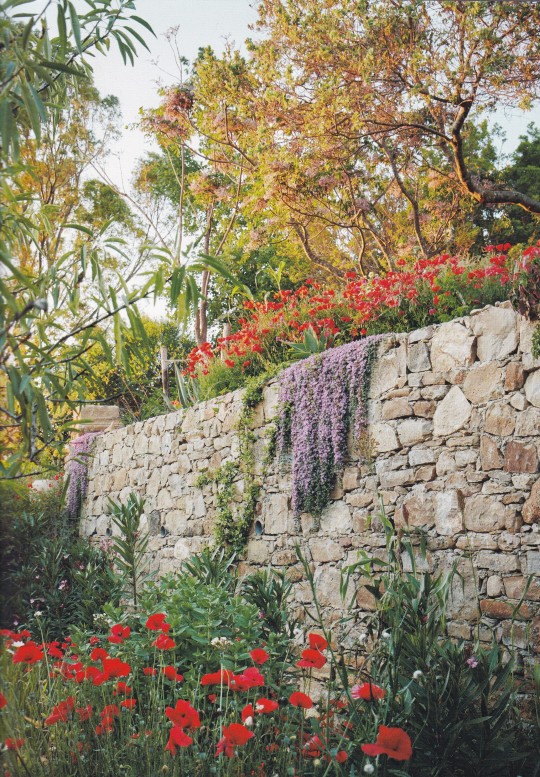
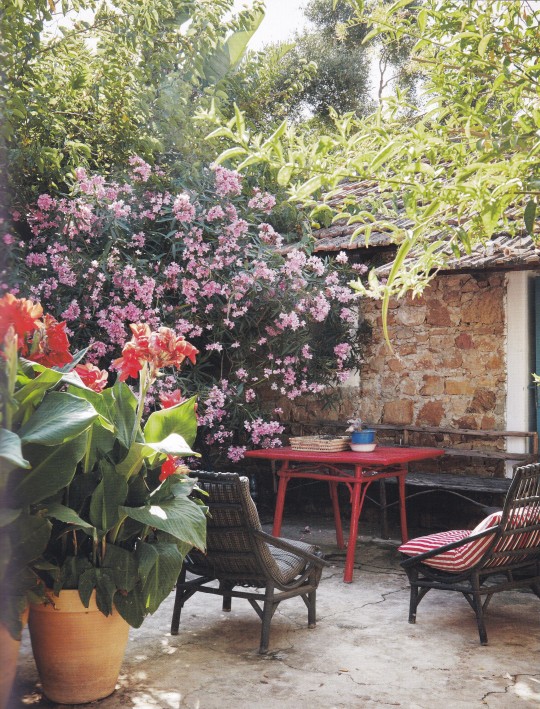








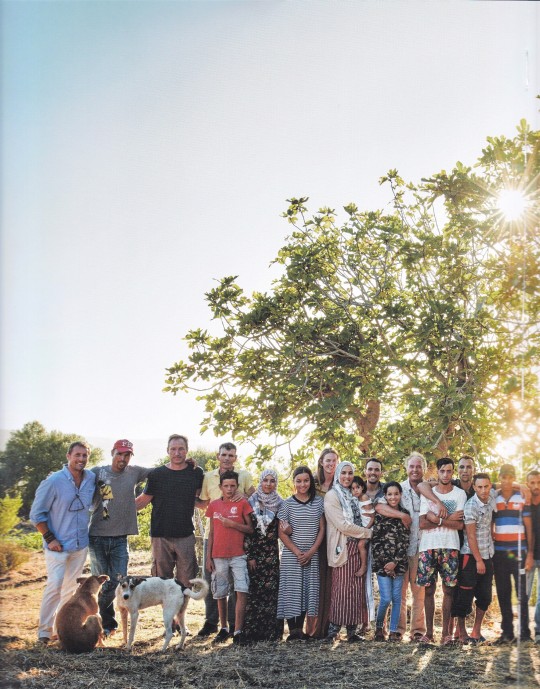
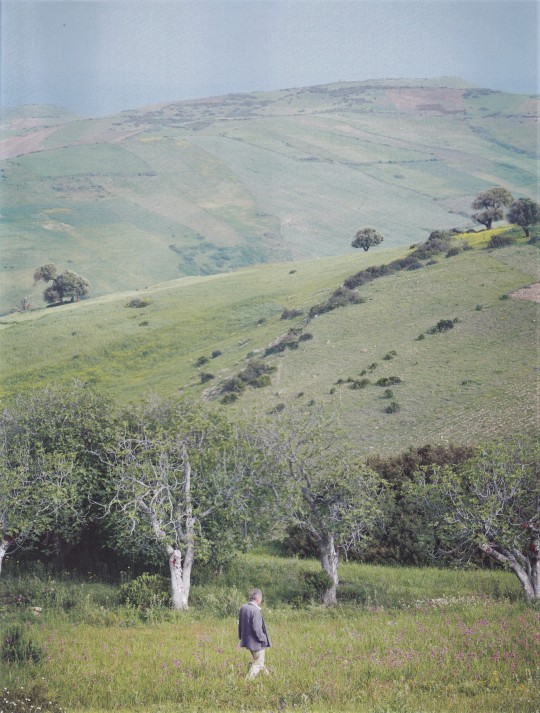
Eden Revisited
A Garden in Northern Morocco
Umberto Pasti & Ngoc Minh Ngo
Foreword by Martina Mondadori
Rizzoli, New York 2019, 240 pages, 22.33 x 28.68, cm ISBN 9780847864805
euro 56,00
A lovingly photographed tour of internationally renowned writer Umberto Pasti's famous hillside garden in Morocco.
Italian writer and horticulturist Umberto Pasti's passion for the wild flora of Tangier and its surrounding region led him to create his world-famous garden, Rohuna, where he has transplanted thousands of plants rescued from construction sites with the aid of men from the village.
Planted between two small houses is the Garden of Consolation: a series of rooms and terraces with lush vegetation, some rendering homage to the paintings of Henri Rousseau, others inspired by invented characters. Surrounding the Garden of Consolation are the Wild Garden and a hillside devoted to the wild flowering bulbs of northern Morocco, where indigenous species of narcissus, iris, crocus, scilla, gladiolus, and others bloom. With its stunning vistas and verdant fields, Rohuna is a garden of incomparable beauty with the mission to preserve the botanical richness of the region. Captured here in detail by celebrated photographer Ngoc Minh Ngo, the poetic beauty of this special and unique place is lovingly rendered for all the world to see and share.
#Eden Revisited#Garden Northern Morocco#Umberto Pasti#Ngoc Minh Ngo#Martina Mondadori#Rohuna#Tangier#gardens books#fashionbooksmilano
3 notes
·
View notes
Text
just so you know, my arabic teacher said today that the lebanese are the cordubans of the arab world and the iraqis the catalan
#he was talking about accents not politics btw#i always love learning about all the dialects of arabic i find them fascinating#also he said the moriscos that STILL LIVE IN NORTHERN MOROCCO have their own distinct dialect derived from 'hispanic arabic' (?)#idk what the technical name is#but that's so cool!!!#for anyone who doesn't know moriscos were the muslims that lived in spain after the reconquista#they were descendants of the moors of al-andalus#and they were expelled out of the peninsula in 1609 it was a big deal we study in history class
7 notes
·
View notes
Text
Sitting by the fireside by some lake up in northern Wisconsin, late at night even (and with apologies to the Cattanooga Cats as well)
[Wherein we find no less than Secret Squirrel and Morocco Mole drinking mint tea and--]
SECRET SQUIRREL, rather stridently: Uh, Morocco--has anyone ever told you that you make such exceptional mint tea, to begin with?
MOROCCO MOLE: Whoever said that I didn't, to begin with?!
SECRET SQUIRREL: At any rate, Morocco, just picture it: Ourselves camping by the lake between missions, just relaxing ... [Suddenly a thought comes unto him] Want to go diving in the lake around sunrise tomorrow morning?
MOROCCO MOLE: Now that would be an interesting possibility!
[I'll leave unto you to imagine how this turns out, especially the diving portion]
#hanna barbera#vignette#secret squirrel and morocco mole#camping#northern wisconsin#sitting by the fire#hannabarberaforever
2 notes
·
View notes
Text

Checkerboard Worm Lizard (Trogonophis wiegmanni), family Trogonophidae, northern Morocco
Legless lizard.
photograph by Kristian Stengaard Munkholm
#legless lizard#worm lizard#trogonophis#trogonophidae#lizard#reptile#herpetology#animals#nature#africa
842 notes
·
View notes
Text
90,000-year-old human footprints found on a Moroccan beach are some of the oldest and best preserved in the world
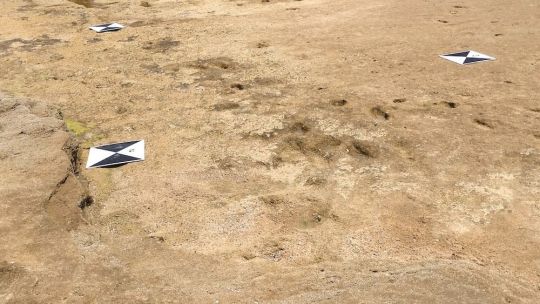
Two trails of ancient human footprints pressed into a beach in Morocco form one of the largest and best-preserved trackways in the world.
Researchers happened upon the footprint site near the northern tip of North Africa in 2022 while studying boulders at a nearby pocket beach, according to a study published Jan. 23 in the journal Scientific Reports.
"Between tides, I said to my team that we should go north to explore another beach," study lead author Mouncef Sedrati, an associate professor of coastal dynamics and geomorphology at the University of Southern Brittany in France, told Live Science. "We were surprised to find the first print. At first, we weren't convinced it was a footprint, but then we found more of the trackway." Read more.
498 notes
·
View notes
Text

Mountain trees 🏞️💙
#Akchour#Morning#Park#Morocco#mountains#sunlights#rocks#landscape#mountaineers#mountaineering#tranquility#calm#trees#plants#Akchour Park#Northern Morocco#Landscape Photography#Natural Beauty#Mountain Scenery#Morning Light#Nature's Majesty#Rock Formation#Scenic Vista#Outdoor Adventure#travel#sky#green#nature#beauty#blue sky
4 notes
·
View notes
Text

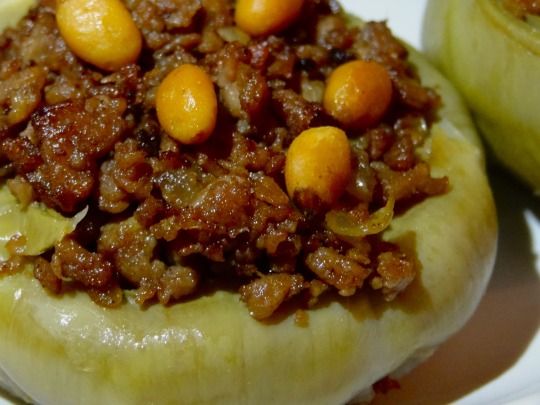
[ID: The first image is of four stuffed artichoke hearts on a plate with a mound of rice and fried vermicelli; the second is a close-up on one artichoke, showing fried ground 'beef' and golden pine nuts. End ID]
أرضي شوكي باللحم / Ardiyy-shawkiyy b-al-lahm (Stuffed artichoke hearts)
Artichoke hearts stuffed with spiced meat make a common dish throughout West Asia and North Africa, with variations on the recipe eaten in Lebanon, Syria, Palestine, Algeria, and Morocco. In Palestine, the dish is usually served on special occasions, either as an appetizer, or as a main course alongside rice. The artichokes are sometimes paired with cored potatoes, which are stuffed and cooked in the same manner. Stuffed artichokes do not appear in Medieval Arab cookbooks (though artichokes do), but the dish's distribution indicates that its origin may be Ottoman-era, as many other maḥshis (stuffed dishes) are.
The creation of this dish is easy enough once the artichoke hearts have been excavated (or, as the case may be, purchased frozen and thawed): they are briefly deep-fried, stuffed with ground meat and perhaps pine nuts, then stewed in water, or water and tomato purée, or stock, until incredibly tender.
While simple, the dish is flavorful and well-rounded. A squeeze of lemon complements the bright, subtle earthiness of the artichoke and cuts through the richness of the meat; the fried pine nuts provide a play of textures, and pick up on the slight nutty taste that artichokes are known for.
Terminology and etymology
Artichokes prepared in this way may be called "ardiyy-shawkiyy b-al-lahm." "Ardiyy-shawkiyy" of course means "artichoke"; "ب" ("b") means "with"; "ال" ("al") is the determiner "the"; and "لَحْم" ("laḥm") is "meat" (via a process of semantic narrowing from Proto-Semitic *laḥm, "food"). Other Palestinian Arabic names for the same dish include "أرضي شوكي محشي" ("ardiyy-shawkiyy maḥshi," "stuffed artichokes"), and "أرضي شوكي على ادامه" ("ardiyy-shawkiyy 'ala adama," "artichokes cooked in their own juice").
The etymology of the Levantine dialectical phrase meaning "artichoke" is interestingly circular. The English "artichoke" is itself ultimately from Arabic "الخُرْشُوف" ("al-khurshūf"); it was borrowed into Spanish (as "alcarchofa") during the Islamic conquest of the Iberian peninsula, and thence into English via the northern Italian "articiocco." The English form was probably influenced by the word "choke" via a process of phono-semantic matching—a type of borrowing wherein native words are found that sound similar to the foreign word ("phonetics"), and communicate qualities associated with the object ("semantics").
"Artichoke" then returned to Levantine Arabic, undergoing another process of phono-semantic matching to become "ardiyy-shawkiyy": أَرْضِيّ ("ʔarḍiyy") "earthly," from أَرْض ("ʔarḍ"), "Earth, land"; and شَوْكِيّ ("shawkiyy") "prickly," from شَوْك ("shawk"), "thorn."
Artichokes in Palestine
Artichoke is considered to be very healthful by Palestinian cooks, and it is recommended to also consume the water it is boiled in (which becomes delightfully savory and earthy, suitable as a broth for soup). In addition to being stuffed, the hearts may be chopped and cooked with meat or potatoes into a rich soup. These soups are enjoyed especially during Ramadan, when hot soup is popular regardless of the season—but the best season for artichokes in the Levant is definitively spring. Stuffed artichokes are thus often served by Jewish people in North Africa and West Asia during Passover.
Artichokes grow wild in Palestine, sometimes in fields adjacent to cultivated crops such as cereals and olives. Swiss traveler Johann Ludwig Burckhardt, writing in 1822, referred to the abundant wild artichoke plants (presumably Cynara syriaca) near لُوبْيا ("lūbyā"), a large village of stone buildings on a hilly landscape just west of طبريا ("ṭabariyya," Tiberias):
About half an hour to the N. E. [of Kefer Sebt (كفر سبط)] is the spring Ain Dhamy (عين ظامي), in a deep valley, from hence a wide plain extends to the foot of Djebel Tor; in crossing it, we saw on our right, about three quarters of an hour from the road, the village Louby (لوبي), and a little further on, the village Shedjare (شجره). The plain was covered with the wild artichoke, called khob (خُب); it bears a thorny violet coloured flower, in the shape of an artichoke, upon a stem five feet in height.
(Despite resistance from local militia and the Arab Liberation Army, Zionist military groups ethnically cleansed Lubya of its nearly 3,000 Palestinian Arab inhabitants in July of 1948, before reducing its buildings and wells to rubble, The Jewish National Fund later planted the Lavi pine forest over the ruins.)
Artichokes are also cultivated and marketed. Elihu Grant, nearly a century after Burckhardt's writing, noted that Palestinian villages with sufficient irrigation "[went] into gardening extensively," and marketed their goods in crop-poor villages or in city markets:
Squash, pumpkin, cabbage, cauliflower, lettuce, turnip, beet, parsnip, bean, pea, chick-pea, onion, garlic, leek, radish, mallow and eggplant are common varieties [of vegetable]. The buds of the artichoke when boiled make a delicious dish. Potatoes are getting to be quite common now. Most of them are still imported, but probably more and more success will be met in raising a native crop.
Either wild artichokes (C. syriaca) or cardoons (C. cardunculus, later domesticated to yield modern commerical artichokes) were being harvested and eaten by Jewish Palestinians in the 1st to the 3rd centuries AD (the Meshnaic Hebrew is "עַכָּבִיּוֹת", sg. "עַכָּבִית", "'aqubit"; related to the Arabic "عَكُوب" "'akūb," which refers to a different plant). The Tosefta Shebiit discusses how farmers should treat the sprouting of artichokes ("קינרסי," "qinrasi") during the shmita year (when fields are allowed to lie fallow), indicating that Jews were also cultivating artichokes at this time.
Though artichokes were persistently associated with wealth and the feast table (perhaps, Susan Weingarten speculates, because of the time they took to prepare), trimming cardoons and artichokes during festivals, when other work was prohibited, was within the reach of common Jewish people. Those in the "upper echelons of Palestinian Jewish society," on the other hand, had access to artichokes year-round, including (through expensive marvels of preservation and transport) when they were out of season.
Jewish life and cuisine
Claudia Roden writes that stuffed artichoke, which she refers to as "Kharshouf Mahshi" (خرشوف محشي), is "famous as one of the grand old Jerusalem dishes" among Palestinian Jews. According to her, the stuffed artichokes used to be dipped in egg and then bread crumbs and deep-fried. This breading and frying is still referenced, though eschewed, in modern Sephardi recipes.
Prior to the beginning of the first Aliyah (עלייה, wave of immigration) in 1881, an estimated 3% of the overall population of Palestine, or 15,011 people, were Jewish. This Jewish presence was not the result of political Zionist settler-colonialism of the kind facilitated by Britain and Zionist organizations; rather, it consisted of ancestrally Palestinian Jewish groups, and of refugees and religious immigrants who had been naturalized over the preceding decades or centuries.
One such Jewish community were the Arabic-speaking Jews whom the Sephardim later came to call "מוּסְתערבים" or "مستعربين" ("Musta'ravim" or "Musta'ribīn"; from the Arabic "مُسْتَعْرِب" "musta'rib," "Arabized"), because they seemed indifferentiable from their Muslim neighbors. A small number of them were descendants of Jews from Galilee, which had had a significant Jewish population in the mid-1st century BC; others were "מגרבים" ("Maghrebim"), or "مغربية" ("Mughariba"): descendents of Jews from Northwest Africa.
Another major Jewish community in pre-mandate Palestine were Ladino-speaking descendents of Sephardi Jews, who had migrated to Palestine in the decades following their expulsion from Spain and then Portugal in the late 15th century. Though initially seen as foreign by the 'indigenous' Mista'avim, this community became dominant in terms of population and political influence, coming to define themselves as Ottoman subjects and as the representatives of Jews in Palestine.
A third, Yiddish- and German-speaking, Askenazi Jewish population also existed in Palestine, the result of immigration over the preceding centuries (including a large wave in 1700).
These various groups of Jewish Palestinians lived as neighbors in urban centers, differentiating themselves from each other partly by the language they spoke and partly by their dress (though Sephardim and Ashkenazim quickly learned Arabic, and many Askenazim and Muslims learned Ladino). Ashkenazi women also learned from Sephardim how to prepare their dishes. These groups' interfamiliarity with each other's cuisine is further evidenced by the fact that Arabic words for Palestinian dishes entered Ladino and Yiddish (e.g. "كُفْتَة" / "kufta," rissole; "مَزَّة" "mazza," appetizer); and words entered Arabic from Ladino (e.g. "דונסי" "donsi," sweet jams and fruit leather; "בוריק" "burek," meat and cheese pastries; "המים" "hamim," from "haminados," braised eggs) and Yiddish (e.g. "לעקעך" "lakach," honey cake).
In addition to these 'native' Jews were another two waves of Ashkenazi migration in the late 18th and early-to-mid 19th centuries (sometimes called the "היישוב הישן," "ha-yishuv ha-yashan," "old settlement," though the term is often used more broadly); and throughout the previous centuries there had also been a steady trickle of religious immigration, including elderly immigrants who wished to die in Jerusalem in order to be present at the appointed place on the day of Resurrection. Recent elderly women immigrants unable to receive help from charitable institutions would rely on the community for support, in exchange helping the young married women of the neighborhood with childcare and with the shaping of pastries ("מיני מאפה").
In the first few centuries AD, the Jewish population of Palestine were largely farmers and agricultural workers in rural areas. By the 16th century, however, most of the Jewish population resided in the Jewish Holy Cities of Jerusalem (القُدس / al-quds), Hebron (الخليل / al-khalil), Safed (صفد), and Tiberias (طبريا / ṭabariyya). In the 19th century, the Jewish population lived entirely in these four cities and in expanding urban centers Jaffa and Haifa, alongside Muslims and Christians. Jerusalem in particular was majority Jewish by 1880.
In the 19th century, Jewish women in Jerusalem, like their Christian and Muslim neighbors, used communal ovens to bake the bread, cakes, matzah, cholent, and challah which they prepared at home. One woman recalls that bread would be sent to the baker on Mondays and Thursdays—but bribes could be offered in exchange for fresh bread on Shabbat. Charges would be by the item, or else a fixed monthly payment.
Trips to the ovens became social events, as women of various ages—while watching the bakers, who might not put a dish in or take it out in time—sent up a "clatter" of talking. During religious feast days, with women busy in the kitchen, some families might send young boys in their stead.
Markets and bakeries in Jerusalem sold bread of different 'grades' based on the proportion of white and wheat flour they contained; as well as flatbread (خبز مفرود / חובז מפרוד / khobbiz mafroud), Moroccan מאווי' / ماوي / meloui, and semolina breads (כומאש / كماج / kmaj) which Maghrebim especially purchased for the Sabbath.
On the Sabbath, those who had brick ovens in their sculleries would keep food, and water for tea and coffee, warm from the day before (since religious law prohibits performing work, including lighting fires, on Shabbat); those who did not would bring their food to the oven of a neighbor who did.
Palestinian Jewish men worked in a variety of professions: they were goldsmiths, writers, doctors, merchants, scientists, linguists, carpenters, and religious scholars. Jewish women, ignoring prohibitions, engaged in business, bringing baked goods and extra dairy to markets in Jerusalem, grinding and selling flour, spinning yarn, and making clothing (usually from materials purchased from Muslims); they were also shopkeepers and sellers of souvenirs and wine. Muslims, Jews, and Christians shared residential courtyards, pastimes, commercial enterprises, and even holidays and other religious practices.
Zionism and Jewish Palestinians
Eastern European Zionists in the 1880s and 90s were ambivalent towards existing Jewish communities in Palestine, often viewing them as overly traditional and religious, backwards-thinking, and lacking initiative. Jewish Palestinians did not seem to conform with the land-based, agricultural, and productivist ideals of political Zionist thinkers; they were integrated into the Palestinian economy (rather than seeking to create their own, segregated one); they were not working to create a Jewish ethnostate in Palestine, and seemed largely uninterested in nationalist concerns. Thus they were identified with Diaspora Jewish culture, which was seen as a remnant of exile and oppression to be eschewed, reformed, or overthrown.
These attitudes were applied especially to Sephardim and Mista'arevim, who were frequently denigrated in early Zionist literature. In 1926, Revisionist Zionist leader Vladimir Jabotinsky wrote that the "Jews, thank God, have nothing in common with the East. We must put an end to any trace of the Oriental spirit in the Jews of Palestine." The governance of Jewish communities was, indeed, changed with the advent of the British Mandate (colonial rule which allowed the British to facilitate political Zionist settling), as European political and "socialist" Zionists promoted Ashkenazi over Sephardi leadership.
Under the Ottomans, the millet system had allowed a degree of Jewish and Christian autonomy in matters of religious study and leadership, cultural and legal affairs, and the minting of currency. The religious authority of all Jewish people in Palestine had been the Sephardi Rabbi of Jerusalem, and his authority on matters of Jewish law (like the authority of the Armenian Patriarchate on matters of Christian law) extended outside of Palestine.
But British and European funding allowed newer waves of Ashkenazi settlers (sometimes called "היישוב החדש," "ha-yishuv ha-khadash," "new settlement")—who, at least if they were to live out the ideals of their sponsors, were more secular and nationalist-minded than the prior waves of Ashkenazi immigration—to be de facto independent of Sephardi governance. Several factors lead to the drying up of halaka (donated funds intended to be used for communal works and the support of the poor in Sephardi communities), which harmed Sephardim economically.
Zionist ideas continued to dominate newly formed committees and programs, and Palestinian and Sephardi Jews reported experiences of racial discrimination, including job discrimination, leading to widespread poverty. The "Hebrew labor" movement, which promoted a boycott of Palestinian labor and produce, in fact marginalized all workers racialized as Arab, and promises of work in Jewish labor unions were divided in favor of Ashkenazim to the detriment of Sephardim and Mizrahim. This economic marginalization coincided with the "social elimination of shared indigenous [Palestinian] life" in the Zionist approach to indigenous Jews and Muslims.
Despite the adversarial, disdainful, and sometimes abusive relationship which the European Zionist movement had with "Oriental" Jews, their presence is frequently used in Zionist food and travel writing to present Israel as a multicultural and pluralist state. Dishes such as stuffed artichokes are claimed as "Israeli"—though they were eaten by Jews in Palestine prior to the existence of the modern state of Israel, and though Sephardi and Mizrahi diets were once the target of a civilizing, correcting mission by Zionist nutritionists. The deep-frying that stuffed artichokes call for brings to mind European Zionists' half-fascinated, half-disgusted attitudes towards falafel.
The point is not to claim a dish for any one national or ethnic group—which is, more often than not, an exercise in futility and even absurdity—but to pay attention to how the rhetoric of food writing can obscure political realities and promote the colonizer's version of history. The sinking of Jewish Palestinian life prior to the advent of modern political Zionism, and the corresponding insistence that it was Israel that brought "Jewish cuisine" to Palestine, allow for such false dichotomies as "Jewish-Palestinian relations" or "Jewish-Arab relations"; these descriptors further Zionist rhetoric by making a clear situation of ethnic cleansing and settler-colonialism sound like a complex and delicate issue of inter-ethnic conflict. To boot, the presentation of these communities as having merely paved the way to Zionist nationalism ignores their existence as groups with their own political, social, and cultural lives and histories.
Help evacuate a Gazan family with Operation Olive Branch
Buy an eSim for use in Gaza
Help Anera provide food in Gaza
Ingredients:
Serves 4 (as a main dish).
For the artichokes:
6 fresh, very large artichokes; or frozen (not canned) whole artichoke hearts
1 lemon, quartered (if using fresh artichokes)
250g (1 1/2 cups) vegetarian ground beef substitute; or 3/4 cup TVP hydrated with 3/4 cup vegetarian 'beef' stock from concentrate
1 yellow onion, minced
Scant 1/2 tsp kosher salt
1/2 tsp ground black pepper
1 pinch ground cardamom (optional)
1/4 tsp ground allspice or seb'a baharat (optional)
1 Tbsp pine nuts (optional)
Water, to simmer
Oil, to fry
2 tsp vegetarian 'beef' stock concentrate, to simmer (optional)
Lemon, to serve
Larger artichokes are best, to yield hearts 3-4 inches in width once all leaves are removed. If you only have access to smaller artichokes, you may need to use 10-12 to use up all the filling; you might also consider leaving some of the edible internal leaves on.
The meat may be spiced to taste. Sometimes only salt and black pepper are used; some Palestinian cooks prefer to include seb'a baharat, white pepper, allspice, nutmeg, cardamom, and/or cinnamon.
Medieval Arab cookbooks sometimes call for vegetables to be deep-fried in olive oil (see Fiḍālat al-Khiwān fī Ṭayyibāt al-Ṭaʿām wa-l-Alwān, chapter 6, recipe no. 373, which instructs the reader to treat artichoke hearts this way). You may use olive oil, or a neutral oil such as canola or sunflower (as is more commonly done in Palestine today).
Elihu Grant noted in 1921 that lemon juice was often served with stuffed vegetable dishes; today stuffed artichokes are sometimes served with lemon.
For the rice:
200g Egyptian rice (or substitute any medium-grained white rice)
2 tsp broken semolina vermicelli (شعيريه) (optional)
1 tsp olive oil (optional)
Large pinch salt
520g water, or as needed
Broken semolina vermicelli (not rice vermicelli!) can be found in plastic bags at halal grocery stores.
Instructions:
For the stuffed artichokes:
1. Prepare the artichoke hearts. Cut off about 2/3 of the top of the artichoke (I find that leaving at least some of the stem on for now makes it easier to hollow out the base of the artichoke heart without puncturing it).
2. Pull or cut away the tough outer bracts ("leaves") of the artichoke until you get to the tender inner leaves, which will appear light yellow all the way through. As you work, rub a lemon quarter over the sides of the artichoke to prevent browning.
3. If you see a sharp indentation an inch or so above the base of the artichoke, use kitchen shears or a sharp knife to trim off the leaves above it and form the desired bowl shape. Set aside trimmings for a soup or stew.
4. Use a small spoon to remove the purple leaves and fibers from the center of the artichoke. Make sure to scrape the spoon all along the bottom and sides of the artichoke and get all of the fibrous material out.
5. Use a paring knife to remove any remaining tough bases of removed bracts and smooth out the base of the artichoke heart. Cut off the entire stem, so that the heart can sit flat, like a bowl.
6. Place the prepared artichoke heart in a large bowl of water with some lemon juice squeezed into it. Repeat with each artichoke.
7. Drain artichoke hearts and pat dry. Heat a few inches of oil in a pot or wok on medium and fry artichoke hearts, turning over occasionally, for a couple minutes until lightly browned. If you don't want to deep-fry, you can pan-fry in 1 cm or so of oil, flipping once. Remove with a slotted spoon and drain.
8. Prepare the filling. Heat 1 tsp of olive oil in a large skillet on medium-high and fry onions, agitating often, until translucent.
Tip: Some people add the pine nuts and brown them at this point, to save a step later. If you do this, they will of course be mixed throughout the filling rather than being a garnish on top.
9. Add spices, salt, and meat substitute and fry, stirring occasionally, until meat is browned. (If using TVP, brown it by allowing it to sit in a single layer undisturbed for 3-4 minutes, then stir and repeat.) Taste and adjust spices and salt.
10. Heat 1 Tbsp of olive oil or margarine in a small pan on medium-low. Add pine nuts and fry, stirring constantly, until they are a light golden brown, then remove with a slotted spoon. Note that, once they start taking on color, they will brown very quickly and must be carefully watched. They will continue to darken after they are removed from the oil, so remove them when they are a shade lighter than desired.
11. Stuff the artichoke hearts. Fill the bowl of each heart with meat filling, pressing into the bottom and sides to fill completely. Top with fried pine nuts.
12. Cook the artichoke hearts. Place the stuffed artichoke hearts in a single layer at the bottom of a large stock pot, along with any extra filling (or save extra filling to stuff peppers, eggplant, zucchini, or grape leaves).
13. Whisk stock concentrate into several cups of just-boiled water, if using—if not, whisk in about a half teaspoon of salt. Pour hot salted water or stock into the pot to cover just the bottoms of the stuffed artichokes.
14. Simmer, covered, for 15-20 minutes, until the artichokes are tender. Simmer uncovered for another 5-10 minutes to thicken the sauce.
For the rice:
1. Rinse your rice once by placing it in a sieve, putting the sieve in a closely fitting bowl, then filling the bowl with water; rub the rice between your fingers to wash, and remove the sieve from the bowl to strain.
2. Place a bowl on a kitchen scale and tare. Add the rice, then add water until the total weight is 520g. (This will account for the amount of water stuck to the rice from rinsing.)
3. (Optional.) In a small pot with a close-fitting lid, heat 1 tsp olive oil. Add broken vermicelli and fry, agitating often, until golden brown.
4. Add the rice and water to the pot and stir. Increase heat to high and allow water to come to a boil. Cover the pot and lower heat to a simmer. Cook the rice for 15 minutes. Remove from heat and steam for 10 minutes.
To serve:
1. Plate artichoke hearts on a serving plate alongside rice and lemon wedges; or, place artichoke hearts in a shallow serving dish, pour some of their cooking water in the base of the dish, and serve rice on a separate plate.
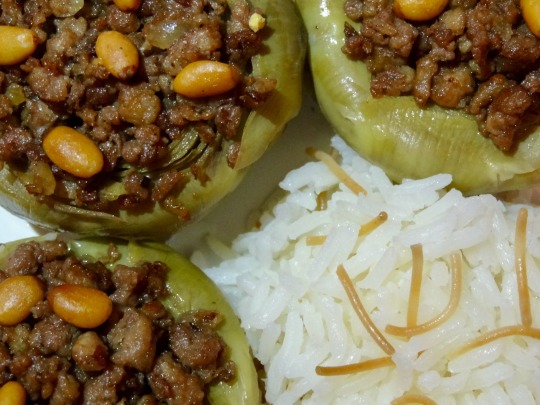
Tip: The white flesh at the base of the bracts (or "leaves") that you removed from the artichokes for this recipe is also edible. Try simmering removed leaves in water, salt, and a squeeze of lemon for 15 minutes, then scraping the bract between your teeth to eat the flesh.
173 notes
·
View notes
Text
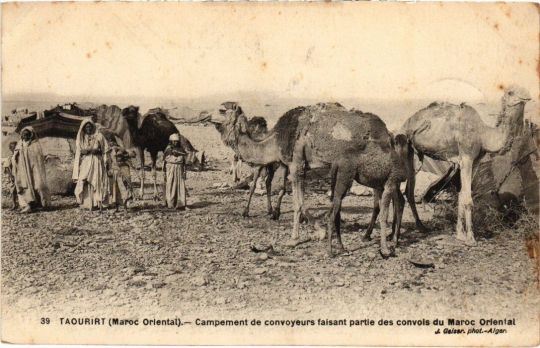
A convoy near Taouirit, northern Morocco
French vintage postcard, mailed in 1916
#morocco#carte postale#ephemera#convoy#vintage#postcard#postkaart#old#taouirit#1916#mailed#photography#french#historic#photo#postal#briefkaart#ansichtskarte#northern#near#tarjeta#postkarte#sepia
4 notes
·
View notes
Text
Animal of the Day!
Northern Bald Ibis (Geronticus eremita)

(Photo by Richard Bartz)
Conservation Status- Endangered
Habitat- Morocco; Turkey
Size (Weight/Length)- 1.3 kg; 80 cm
Diet- Insects; Reptiles; Snails; Scorpions; Small mammals
Cool Facts- The Northern bald ibis could once be found across Europe, the Middle East, and Africa but hunting and persecution has driven this bird to near extinction. With less than 700 birds in the wild and 2,000 in captive breeding programs, efforts to reintroduce these non-wading ibis are intensive. The Northern bald ibis live in small groups on cliff ledges and arid steppes as they search for insects and small mammals. These ibis have a close connection with Mediterranean culture. In Ancient Egypt, these birds were sacred and considered the embodiment of Thoth. Greek Stymphalian birds were possibly based on Northern bald ibis. In Turkey, these ibis are symbols of fertility and were thought to be the first animal released from Noah’s Ark.
Rating- 13/10 (A conservation success story in the making.)
#animal of the day#animals#birds#ibis#saturday#september 16#northern bald ibis#biology#science#conservation#the more you know#mythology#egyptian mythology#greek mythology
325 notes
·
View notes
Text

Esther Assaraf, a Jewish woman from Akka, Northern Sahara (Morocco), photographed in 1955 by Elias Harrus.
157 notes
·
View notes
Text
ON BASQUE AND ITS TIES WITH GEORGIAN, ARMENIAN, AND TAMAZIGHT.
American linguist Morris Swadesh (1909-1967) created a world map of current languages according to comparative linguistics, taking into account their common origin. The lexico-statistical or glottochronological Swadesh method is based on taking 215 words in two groups of 100; key words such as personal pronouns, low numerals, parts of the body, kinship names, some action verbs, some adverbs of time and place, objects of nature, very common actions, bodily actions and questions.
Swadesh claimed that in the basic vocabulary the rate of change is so regular in languages, that he had been able to create a system of measuring the elapsed time in which two languages were related in the past and that today are separated geographically.
According to Swadesh, that basic vocabulary of 100 or 215 words changes less than 20% per millennium in each language. These variations in vocabulary leave a common ground between two or more languages related to each other, which is measured chronologically, thus establishing the time distance between a language and its more modern relatives. If the number of words with the same root between two languages in these two groups of 100 is less than or equal to 5%, it is considered a similarity by chance (the figure does not respond to anything specific, the method has many random parts), and if it is greater it would be the result of some common past.
There is a formula to know the time elapsed between the period in which the contact occurred and the current moment, and the result with Basque was the following (with the rest of the languages with which Basque has been compared by this method the result is inferior and not significant):
list 215 list 100
Northwest Circassian Caucasian:
6.62% 7.52%
Northwest Avar Caucasian:
3.80% 5.37%
Georgian, South Caucasian:
4.73% 7.52%
Rift Tamazight (northern Morocco):
6% 9.67%
Southern Tamazight (southern Morocco)
7.38% 10.86%
Many of the similarities considered good are more than questionable, since the evolution of words and languages is not taken into account, some borrowings from other languages are considered good, etc.
Nor can we forget American linguist R.L. Trask, that compared Hungarian and Basque and found in 2 hours of searching 65 similar words that could only be the result of chance, but that lead to question many investigations: this exercise tested by other researchers with other unrelated languages has given the same surprising result. R.L. Trask said “I can't understand why some linguists get so excited when they find two dozen Basque words that look like two dozen other Berber or Sumerian words.”
Basque and the languages of the Caucasus
The Caucasus is located 4,000 kilometers from Garonne-Pyrénées-Ebro where the Basques live. In the Caucasus, about 50 different peoples coexist with almost 22 languages. The main difficulty in establishing the Basque-Caucasian relationship consists of this lack of unity.
Swadesh's lexico-statistical ratio of Circassian and Georgian to Basque is 7.52%, higher than any other language in the world. The supposed contact would have occurred in the Magdalenian, about 10,000 years ago. With the rest of the languages of the Caucasus, current Basque is similar in typology (verbs, the ergative, etc.) and in the etymology of some words, but its lexical-statistical relationship with all of them is less than 5%.
There are also parallels between Basque and Georgian in syntactic aspects, such as the use of the ergative (transitive-intransitive verbs, “Nor-Nork” forms) that do not occur in any other European language, the reflexive way of making sentences such as: “I have seen my head in the mirror” (nire burua ispiluan ikusi dut), and not: “I have seen myself in the mirror”, the use of base twenty to count, etc.
But many current or recent renowned linguists are skeptical about the relationship with the Caucasian languages. Basque linguist Koldo Mitxelena (1915-1987) said that: “In summary, there are some Basque-Caucasian lexical similarities that cannot be demonstrated to be possible, but on the other hand there are a large number whose extraordinary implausibility can be demonstrated (…). Even if Basque and the Caucasian languages go back to a common origin, the number of missing intermediate links must be so high that it is to be feared that, due to not knowing them, the ancient ties of kinship will not be established."
If there is a relationship, for both Koldo Mitxelena and Xabier Kintana, it has to go back to the fifth and sixth millennia or earlier.
Basque and Armenian
Armenian linguist and Basque philologist Vahan Sarkisian, creator of the Basque-Armenian Dictionary and a Grammar of the Basque Language in his language, is the main promoter of the "Basque-Armenian theory" and the one who has done the most work in recent years on ethnolinguistic kinship between both peoples.
This prestigious Armenian linguist affirms that "the best promoters of this theory were neither Basques nor Armenians and, therefore, they had no direct interests in the issue. I am referring to the Englishman Edward Spencer Dodgson and the German Joseph Karst. The former knew well Basque. In Paris he began to study Armenian and quickly detected the similarities, which he initially summarized in a list of 50 words. Karst was an Armenianologist and, when he came into contact with Basque, he compared issues related to anthropology, the phonetic system, the grammar and the lexicon and extracted more than 400 similarities. (...) We understand without problems, for example, what Zabaltegi, or Ormazabal means, because it means exactly the same in Armenian. We feel at home, and that already means something. Armenian is considered an Indo-European language (Basque is the only pre-Indo-European language in all of Europe, prior to the invasions of these peoples), but if we bring to light the twenty most important regularities of the language we will see that they coincide more with Basque than with any other neighboring languages such as Georgian or Persian. And not only referring to the lexicon. In Armenian, for example, words are not formed with an initial -r, our throat has a hard time pronouncing it. The same thing happens to the Basque language, to the Basque throat.
Neither Armenian nor Basque recognize the accumulation of consonants, they are unpronounceable to us, while in other languages neighboring ours, such as Georgian, groups of up to five or six consonants are common. We could mention many other characteristics that separate us from our neighbors and bring us closer to Basque, such as the postponed article, the way of forming the plural, not to mention toponymy, which provides an enormous amount of similarities. (…) I believe that this type of coincidences - which even affect the articulation apparatus, which has a physiological nature - cannot arise from mere contact, they cannot be imported or exported. Karst said that Armenian and Basque are two varieties of the same linguistic stem (…) The only thing I would dare to say with any certainty is that perhaps in ancient times the entire area was occupied by the same ethnic-cultural element, which gave way terrain to other elements, leaving vestiges in Euskadi and Armenia, as survivors of a great and ancient civilization.”
It is curious that Armenian – which does not give any relationship with Basque through the Swadesh method – and Georgian are, apparently, more similar to Basque than to each other when they are neighboring peoples. To conclude this short summary, let's share a toponymic curiosity: in Georgia there is Mount Gorbeya (like the highest mountain in Bizkaia and Alaba), in Armenia is the sacred Mount Ararat (like the Aralar mountain range between Alaba, Gipuzkoa and Alta Navarra), and also a mountain named Gora (mountain in the language of the area and "up" in Basque). The curiosity is even greater because the Araxes River bathes Mount Aralar, and in the Armenian Mount Ararat there is a river called... Araxes.
Basque and Tamazight
Tamazight, by the Swadesh method, is not related to Arabic or Egyptian; nor with Georgian, but with Basque, as well as the Cadmitosemitic languages from which it comes. Therefore, Basque is a language that may have common elements with Georgian and Berber, but they do not have any with each other.
The percentage of lexical-statistical relationship of Swadesh of Basque with Southern Tamazight is 7.38% and with Rift Tamazight is 6% (taking the 215 words because with 100 the percentage increases). Therefore, by this method there would be a relationship or common substrate between both languages. Based on the percentage relationship, contact would have taken place about 8,000-9,000 years ago.
In Berber the names given to animals are very similar to those given in Basque. «Aker» & «iker» (billygoat), «asto» & «ezet» (donkey); They also coincide in the way of saying horse, crow, river, brother, lie, name ("Izen" and "isem"), "I" and others.
Within this analysis we must mention the Guanches, native inhabitants of the Canary Islands before the arrival of the Spaniards. From the writings found (archaeology confirms this) it is believed that the Guanches would speak a Tamazight language that, due to the isolation of the islands, would maintain a greater degree of relationship with Basque. There are those who even see Basque place names in the Canary Islands such as: Los Llanos de Aridane (Harrigane: stone peak), Argindei, Tinizara (Tinitzaha), Tajuia, Tenegia, Jedei (Iedegi) in La Palma and in Lanzarote: Masdeche (Mahats- etxe: grape-house), Haria, Orzola, Guinate (Gainate: high step), Yaiza (haitza: rock), Ajache, Tesegite, Mozaza etc.
An anecdote that is often told is that the first conquerors of the Canary Islands believed that the natives spoke Basque.
Between Basque and Tamazight the similarities are reduced to the lexical or lexicographic level, since syntactically and grammatically there does not seem to be any relationship, both in current speech and in the past; there are just similarities in verbal articulation or in the use of some particles.
Julio Caro Baroja said in this regard: “I must warn in any case that the relationship between Basque and the African languages called Hamitic is not as founded as claimed. On the contrary, the hypothesis of a relationship between Basque and the Caucasian languages, which is perhaps the one that has produced the least interest in the Peninsula, seems to be the most prudent, because it is based on linguistic, morphological and strict observations.
Koldo Mitxelena had the same opinion, and believed it was necessary to study more the relationship between Basque and the Caucasian languages which, unlike the supposed kinship with Tamazight, did cause serious doubts.
[x]
@knario47
#euskal herria#basque country#pays basque#pais vasco#euskadi#linguistics#euskera#euskara#basque#language#armenian#georgian#tamazight
91 notes
·
View notes